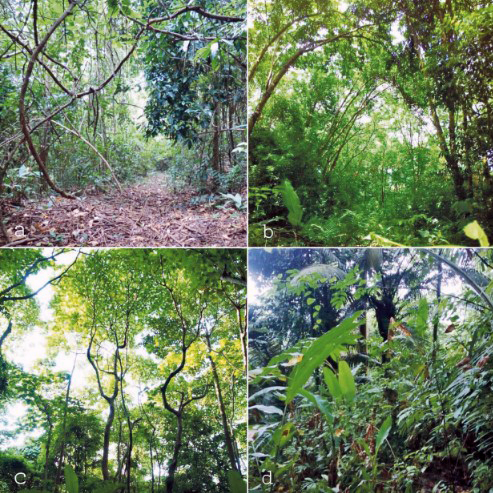งานวิจัยและบทความ

การเปรียบเทียบการฟื้นตัวของป่าในพื้นที่สวนยางพาราที่ถูกทิ้งร้างและพื้นที่ป่าที่เคยมีการตัดไม้ พร้อมนัยสำคัญต่อการฟื้นฟูระบบนิเวศป่าไม้ในภาคตะวันออกเฉียงใต้ของประเทศไทย
โดย James F. Maxwell, กุลวดี แก่นสันติสุขมงคล, ประสิทธิ์ วงษ์พรม
เผยแพร่เมื่อ 19 มิถุนายน 2024
นิเวศวิทยา
แหล่งจัดเก็บทรัพยากรต้นฉบับ
Natural History Bulletin of the Siam Society (NHBSS) , Vol. 64, No. 2, 2022
ดาวน์โหลด
Rubber plantations have been encroaching into upland areas in Southeast Asia for many decades. Such monocultural expansion is a major driver of deforestation in many countries. In Thailand, illegal rubber plantations are subject to government forfeiture and most have been abandoned, allowing subsequent forest regeneration. In Rayong Province, Southeast Thailand, rubber has expanded into upland forest areas since 1987. Here, we report on tree regeneration and ground flora in a rubber plantation abandoned 20 years ago in semi-evergreen forest in the province and compare it with a regenerating forest that was selectively logged prior to 1978. We also surveyed mammals and birds at each site, to determine the potential for zoochorous seed dispersal. The tree flora (≥10 cm DBH) of the abandoned rubber plantation was dominated by Leucaena leucocephala (Leguminosae, Mimosoideae), and the sapling layer (1–5 cm DBH) by Streblus ilicifolius (Moraceae). The non-native L. leucocephala had been introduced by the plantation owner to enrich the soil. Rubber trees (up to 33 years old) still dominated the upper canopy. Native small-tree density (5–10 cm DBH) was 66% higher and native large-tree density (≥10 cm DBH) was 24% lower in the abandoned rubber plantation (ARP) than in the logged evergreen forest (LEF), indicating an earlier successional status in the former. Species richness and diversity of woody plants were higher in the LEF than in the ARP in most strata, except for tree and shrub species ≥5 cm DBH, of which 73 species had re-established in the ARP (despite competition from the alien L. leucocephala), compared with 63 species in the LEF. Native liana species were common in both plots (22 species in the ARP; 24 in the LEF). Of all native trees and shrubs ≥5 cm in DBH in the ARP 73% were known to be dispersed by animals, in comparison with 79% for the LEF. Longterm research is needed to determine if native species, recruiting into the ARP from nearby logged natural forests, will be able to outcompete the alien species and become dominant.